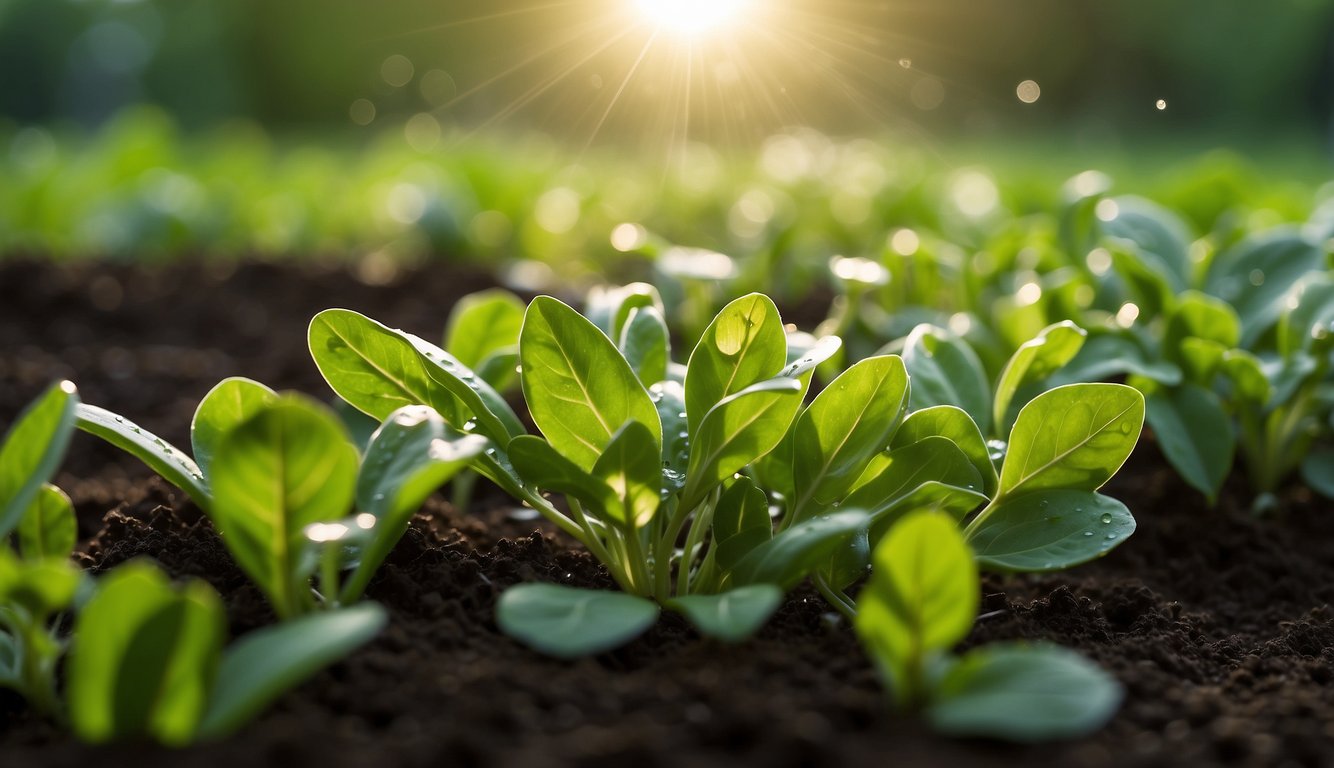TheHerbProf.com is a treasure trove of knowledge for those interested in natural healing and herbal remedies. The website is run by Paul Johnston MD. A naturopathic who has not only received extensive education in the field but also has personal experience in self-healing.
Arugula, also known as salad rocket, is a leafy green vegetable that belongs to the Brassicaceae family. It is easy to grow and adds a unique, peppery flavor to salads and other dishes. In this article I will give you the top tips in making your arugula growing to the next level!
One of the benefits of growing arugula is that it is a fast-growing crop, taking only about 3-4 weeks to reach maturity. It prefers cooler temperatures and can be grown in both spring and fall.
Arugula can also be grown in containers, making it a great option for those with limited garden space. With the right care and maintenance, it can even be grown indoors year-round.
In this article, I’ll share my knowledge and experience on growing arugula, including the best practices for planting, caring, and harvesting this delicious salad green. I’ll also provide tips on how to deal with common pests and diseases that can affect your arugula crop.
So, whether you’re a seasoned gardener or just starting out, keep reading to learn how to successfully grow arugula in your own backyard.
Understanding Arugula Growing
As an avid gardener, I have grown arugula for years and have come to appreciate its unique flavor and versatility. In this section, I will share my knowledge about arugula, including its botanical profile, varieties, and growing requirements.
Botanical Profile
Arugula, also known as rocket, roquette, rugalach, rucola, or Eruca vesicaria, is a member of the Brassicaceae family, also known as the mustard family. It is an annual plant that produces lobed leaves that are deeply serrated and can range in color from light green to dark green.
The leaves have a peppery, slightly bitter taste that makes arugula a popular ingredient in salads, sandwiches, and other dishes.
Arugula plants can grow up to two feet tall and produce small white flowers that bloom in the spring and summer. The flowers are followed by seed pods that contain the arugula seeds, which can be harvested and replanted for future crops.
Varieties of Arugula
There are several different cultivars of arugula, each with its own unique flavor and appearance. The two most common cultivars are Astro and Sylvetta.
Astro arugula has a milder flavor than other varieties and is characterized by its small, compact leaves. It is a popular choice for container gardening and can be grown indoors or outdoors.
Sylvetta arugula, also known as wild arugula, has a stronger, more peppery flavor than other varieties and is characterized by its long, narrow leaves. It is a hardy plant that can withstand colder temperatures and is often used in Italian cuisine.
In addition to these two cultivars, there are many other types of arugula available, including Amish, Italian, and Dragon’s Tongue. Each variety has its own unique flavor and appearance, making arugula a versatile and exciting ingredient to grow in your garden.
Cultivation Essentials – Arugula Growing
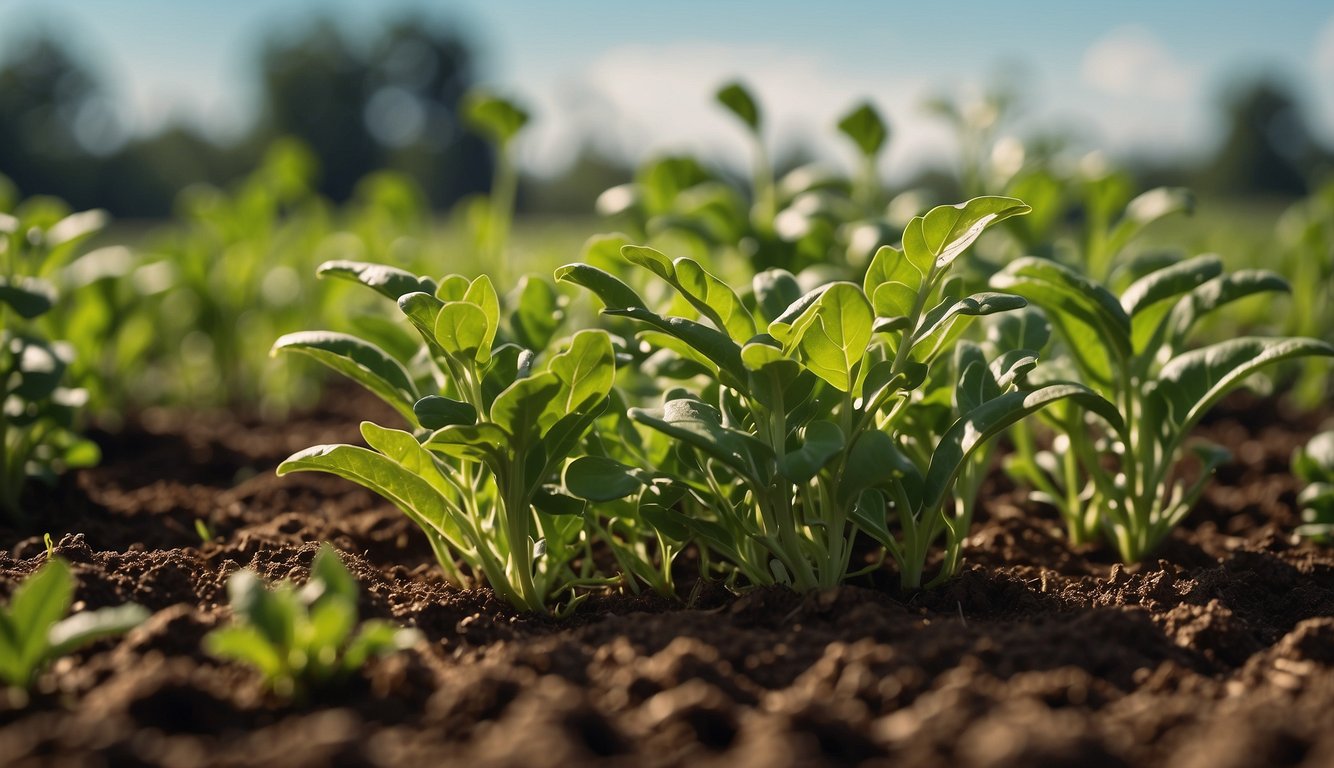
Soil Preparation
Before planting arugula, it is important to prepare the soil properly. Arugula prefers well-drained soil with a pH between 6.0 and 7.0.
If your soil is too acidic, add some lime to raise the pH. If it is too alkaline, add some sulfur to lower the pH.
Arugula also prefers soil that is rich in organic matter. Add some compost or well-rotted manure to the soil to improve its fertility.
Planting Arugula
Arugula can be grown from seed in the garden, rows, pots, or containers. Sow the seeds about 1/4 inch deep and 1 inch apart.
If planting in rows, space the rows about 10 inches apart. If planting in pots or containers, make sure they are at least 6 inches deep to allow for root growth. Arugula can also be grown in raised beds.
Light and Temperature
Arugula prefers full sun to partial shade. It is a cool-season crop that can tolerate light frost, but it is not heat tolerant.
The ideal temperature for germination is between 50 and 65 degrees Fahrenheit. Arugula can be sown in early spring or in the fall.
Watering and Feeding
Arugula needs consistent moisture to grow well. Water the plants deeply once or twice a week, depending on the weather.
Arugula does not require a lot of fertilizer, but it will benefit from a light feeding of nitrogen-rich fertilizer once or twice during the growing season.
Avoid over-fertilizing, as this can cause the leaves to become bitter.
Maintenance and Care – Arugula Growing
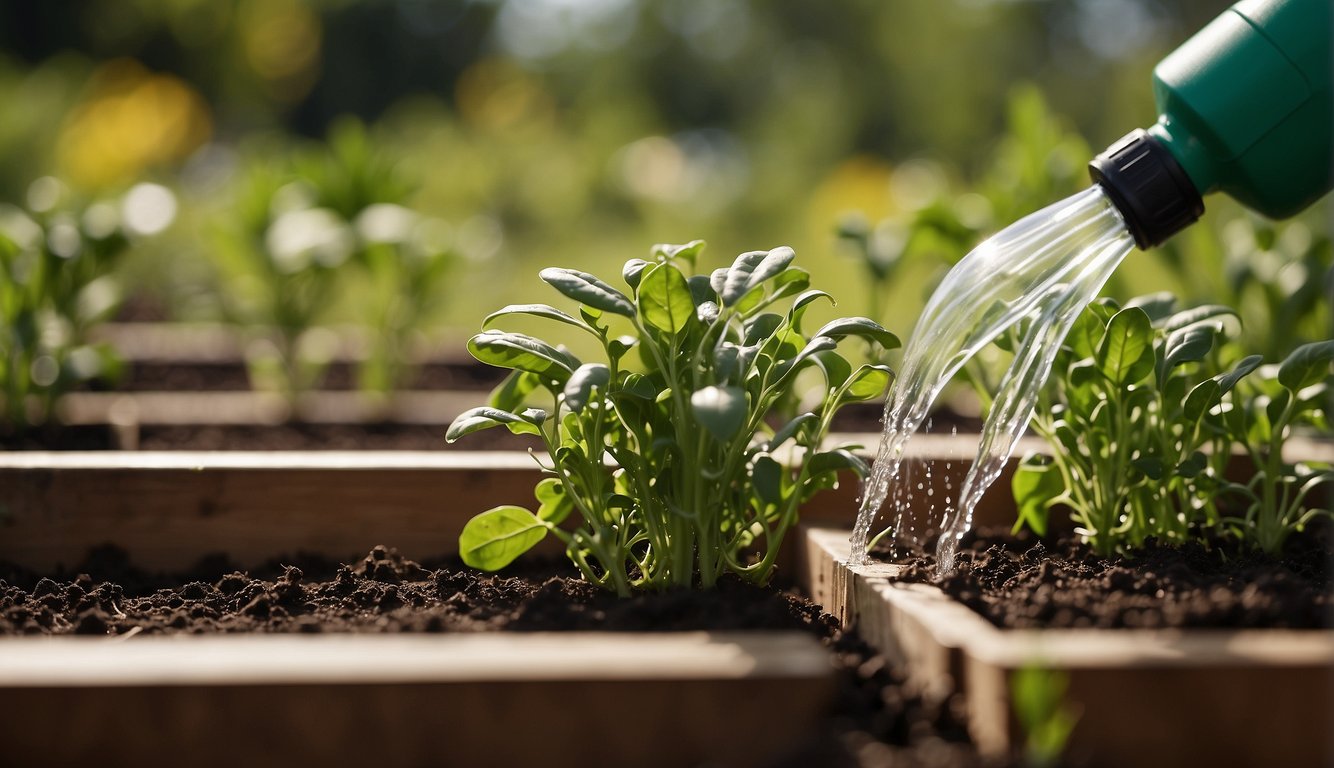
Growing arugula is relatively easy, but proper maintenance and care are crucial to ensure a healthy and bountiful harvest. Here are some tips and tricks to keep your arugula plants thriving.
Thinning and Spacing
Arugula plants need adequate space to grow and develop properly. Overcrowding can lead to poor air circulation, which can increase the risk of disease and pest infestation.
Therefore, it is essential to thin out your arugula plants once they reach a certain size.
To thin out your arugula plants, simply remove the weaker or smaller plants, leaving only the healthiest ones.
The ideal spacing for arugula plants is around 6 inches apart, but this may vary depending on the variety you are growing. Refer to the seed packet or consult with your local gardening expert to determine the best spacing for your arugula plants.
Weed and Pest Management
Weeds can compete with your arugula plants for nutrients and water, so it is important to keep your garden bed weed-free.
Regularly remove any weeds that appear around your arugula plants, being careful not to disturb the roots.
Arugula plants are susceptible to flea beetles and slugs, which can cause significant damage to the leaves.
To prevent these pests from infesting your plants, consider using row covers or companion plants that repel these insects.
If you do notice an infestation, try using diatomaceous earth, which is a natural pest control method that can help eliminate these pests.
Disease Prevention
Arugula plants can be affected by several diseases, including downy mildew and white rust.
To prevent these diseases from affecting your plants, make sure to provide adequate air circulation and avoid overwatering your plants.
Additionally, consider using disease-resistant varieties of arugula and avoid planting in areas where these diseases have previously been a problem.
Harvesting and Storage – Arugula Growing
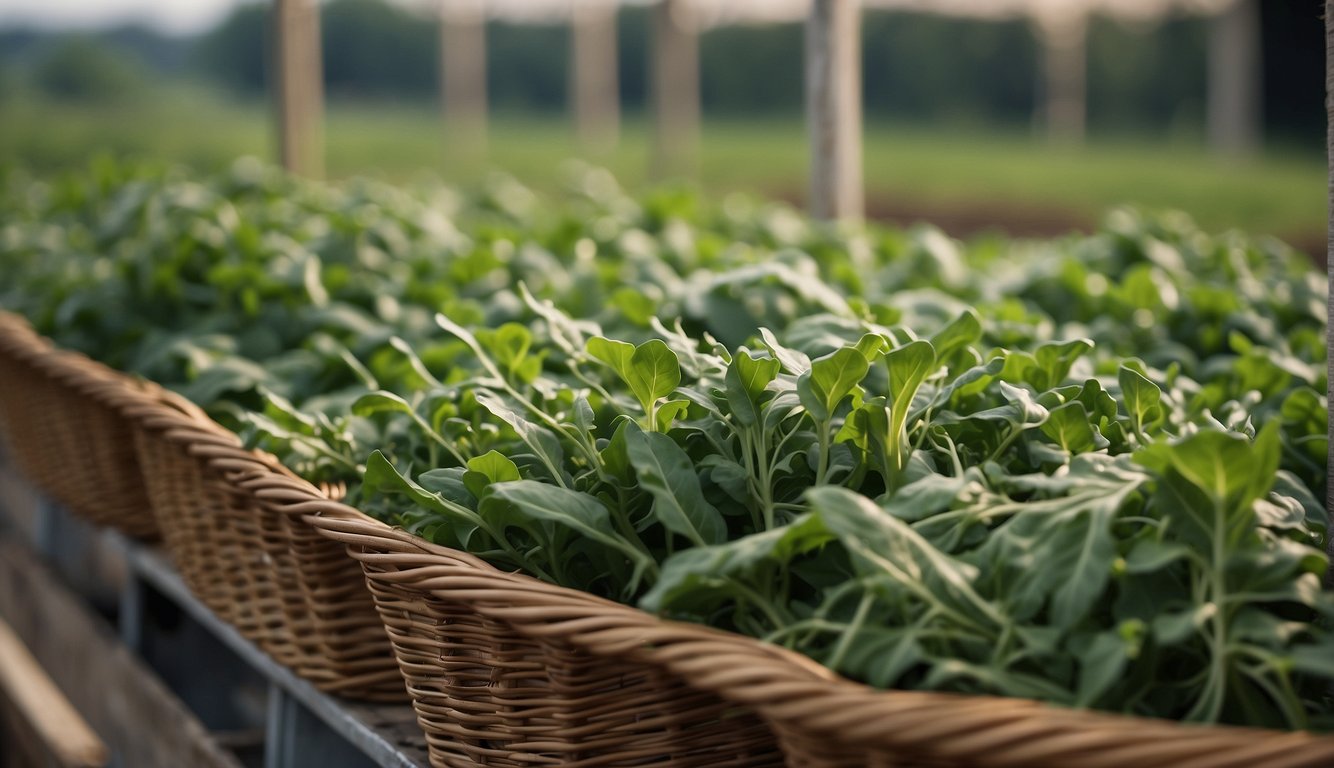
When to Harvest Arugula
Arugula is a fast-growing leafy green that can be harvested as early as 20 days after sowing the seeds.
The leaves can be harvested when they are 4 to 6 inches tall for baby arugula, while for mature arugula, the leaves can be harvested once they have grown double the size of the baby arugula.
It is important to note that arugula has a peppery, tangy, and mildly spicy flavor that intensifies as it matures. Therefore, it is best to taste the leaves before harvesting to ensure that the flavor is suitable for your intended use.
When harvesting arugula, use garden scissors or a serrated bread knife to cut the leaves.
Cut the leaves to 1 inch (2.5 cm) above the crown of the plant if you plan to harvest individual leaves or cut the whole bunching head. Either way, the plant will keep producing new leaves as long as you don’t damage the crown or roots.
Post-Harvest Handling
After harvesting, it is important to handle arugula properly to ensure its freshness and quality.
First, rinse the leaves thoroughly in cold water to remove any dirt or debris. Then, gently pat the leaves dry with a clean towel or spin them in a salad spinner to remove excess moisture.
Arugula can be stored in the refrigerator for up to a week.
To store, wrap the leaves in a damp paper towel and place them in a plastic bag or airtight container.
Alternatively, you can also store arugula in a vase with water, just like you would with flowers. This will keep the leaves fresh and crisp for a few days.
Arugula is a versatile ingredient that can be used in salads, sandwiches, and as a pizza topping.
It can also be used to make pesto, adding a peppery flavor to the sauce.
When cooking with arugula, it is best to add it at the end of the cooking process to prevent it from wilting and losing its flavor.
Arugula in the Kitchen – Arugula Growing
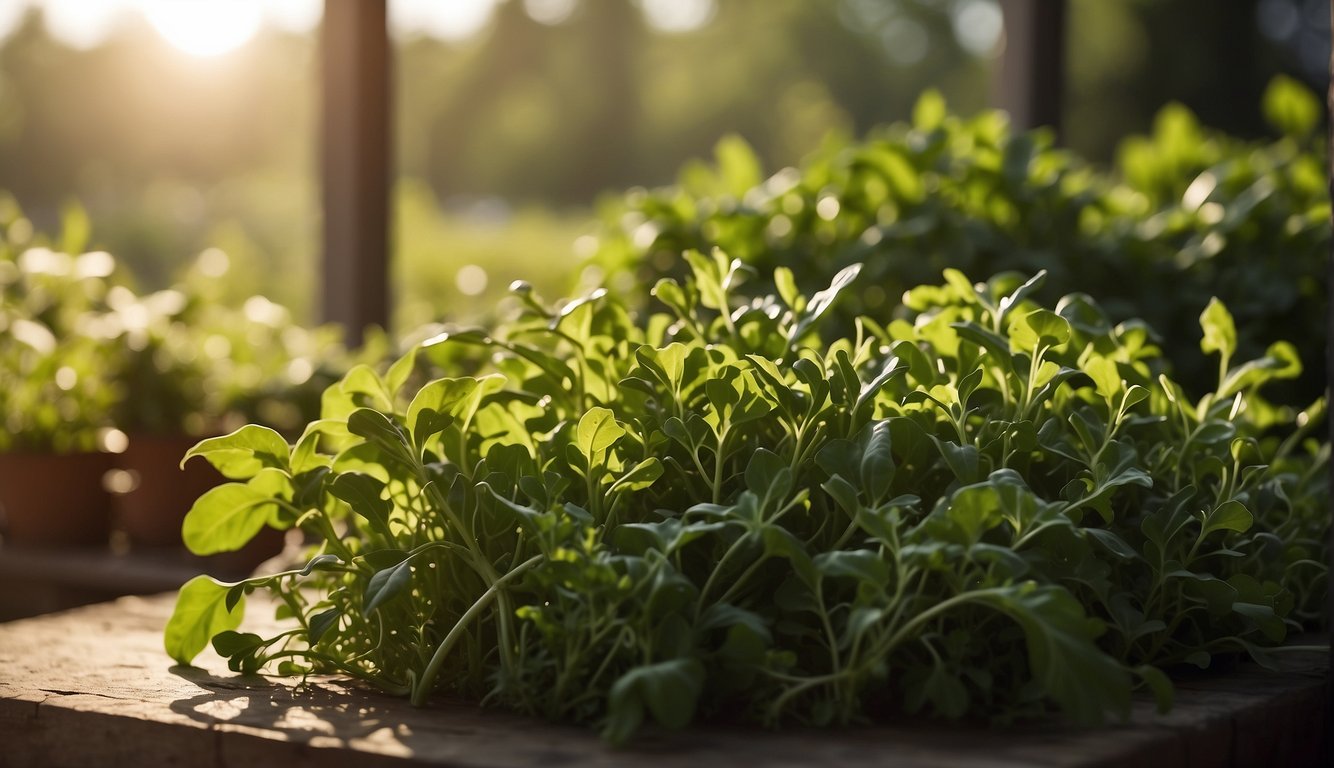
Culinary Uses
As someone who grows arugula, I can say that it is a versatile and flavorful green that can be used in a variety of dishes.
One of the simplest ways to use arugula is in salads. It pairs well with other salad greens such as spinach, kale, and mesclun. Arugula’s peppery and tangy flavor adds a nice kick to any salad.
It also goes well in sandwiches, adding a fresh and spicy element to the sandwich.
Arugula is also great for cooking. It can be sautéed, steamed, or roasted. When cooked, the flavor mellows out a bit but still retains its peppery taste.
It can be used as a side dish, added to pasta dishes, or even used in pesto.
Speaking of pesto, arugula pesto is a delicious alternative to traditional basil pesto. It’s a great way to use up any excess arugula you may have.
Flavor Pairings
Arugula has a unique flavor that pairs well with certain foods.
It goes well with other vegetables such as broccoli and spinach. When used in pizza, it adds a nice spicy kick to the pie.
It also pairs well with thyme, which adds a nice earthy flavor to the dish.
When used in salads or sandwiches, arugula pairs well with tangy dressings or sauces.
Gardening Tips and Tricks – Arugula Growing
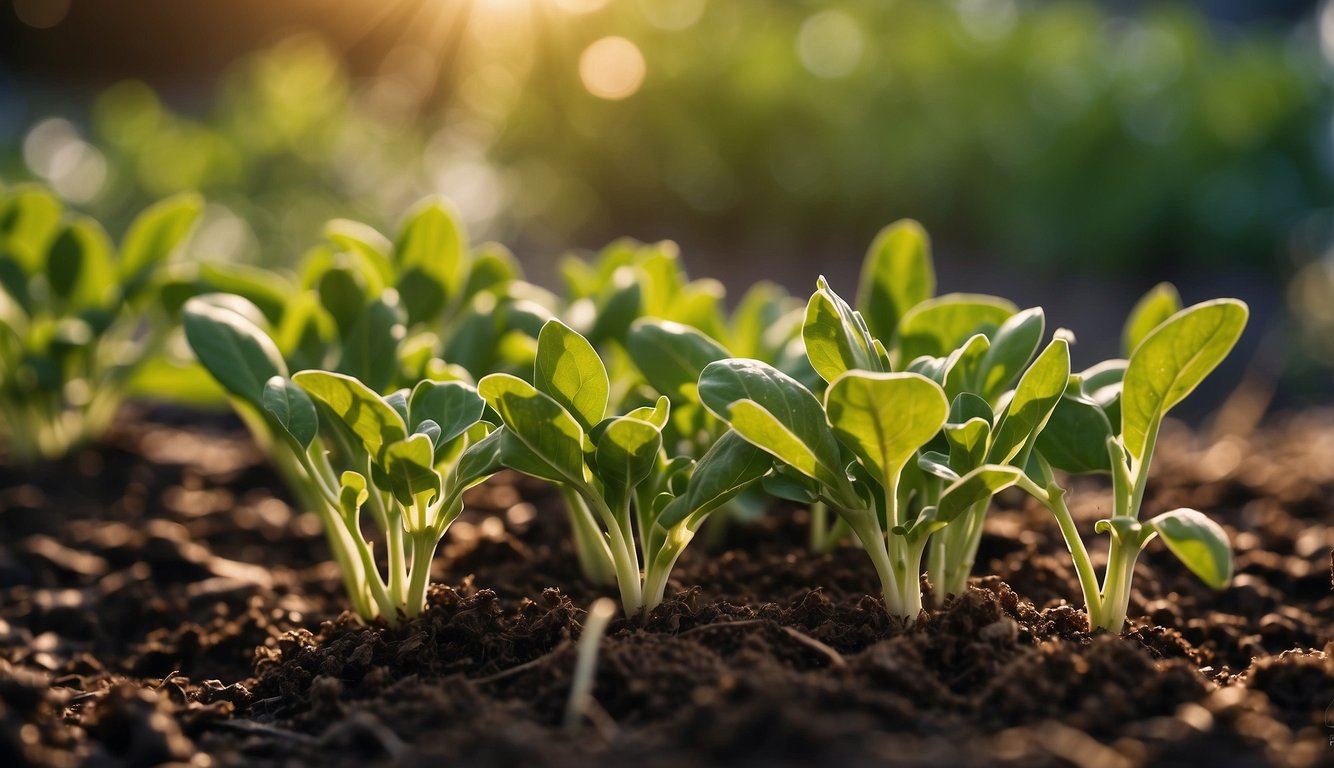
As someone who has grown arugula for years, I have learned a lot about what works and what doesn’t when it comes to this cool-season crop. Here are some tips and tricks that I have found helpful:
Seasonal Advice
Arugula is a Mediterranean plant that was first cultivated in Turkey.
It is a cool-season crop that grows best in early spring or late summer to early fall. In warmer climates, it can be grown year-round.
When growing arugula in the spring, it is important to plant it as soon as the ground can be worked. In the fall, plant it at least 6-8 weeks before the first expected frost.
Growing Arugula in Pots
If you don’t have a lot of space, arugula can be grown in pots or containers.
Choose a container that is at least 6 inches deep and has drainage holes. Fill the container with a good quality potting mix and sow the seeds about 1 inch apart.
Keep the soil moist and the container in a sunny location. Once the seedlings have emerged, thin them to about 4 inches apart.
Companion Planting
Arugula grows well with other cool-season crops such as beans and peas.
It can also be planted as a companion plant in the vegetable garden to help repel pests and attract beneficial insects.
However, it should not be planted near other members of the Brassica family such as broccoli or cauliflower, as they can attract the same pests and diseases.
Uniting Arugula Growing with TheHerbProf
Let’s explore how our Arugula Growing guide and the herbal wisdom at theherbprof.com can work together.
Our Arugula Growing guide is your first step to a bountiful arugula harvest. But what about the rest of the journey? That’s where theherbprof.com comes in. It’s your herbal encyclopedia, including arugula care!
Picture this. You’ve followed our Arugula Growing guide and your arugula is sprouting. But you’re unsure about pest control or when to harvest. No problem! Theherbprof.com has all the answers. It offers a wealth of information on how to care for your arugula plants.
And there’s more! Theherbprof.com also shares the health benefits of arugula. So, while you’re enjoying the fruits of your labor, you’re also learning about their nutritional value.
So, let’s get growing with our Arugula Growing guide and let theherbprof.com guide us on this arugula-growing journey.
References – Arugula Growing
Little Herb Encyclopedia, by Jack Ritchason; N.D., Woodland Publishing Incorporated, 1995
The Ultimate Healing System, Course Manual, Copyright 1985, Don Lepore
Planetary Herbology, Michael Tierra, C.A., N.D., Lotus Press, 1988
Handbook of Medicinal Herbs, by James A. Duke, Pub. CRP Second Edition 2007
The Complete Medicinal Herbal, by Penelope Ody, Published by Dorling Kindersley
Check the Following Articles!
Top Pruning Shears for a Clean and Precise Cut
Seed Starter Recipe: How to Make Your Own at Home
Most Beautiful Fruit Trees: Stunning Trees for Your Garden
Best Fertilizer for Tomatoes: Top Picks For Harvest Boost
Frequently Asked Questions – Arugula Growing

What are the optimal growing conditions for arugula?
Arugula grows best in cool weather and prefers full sun to partial shade.
It thrives in well-draining soil with a pH between 6.0 and 7.0.
It is important to keep the soil consistently moist but not waterlogged to prevent the roots from rotting.
How do you grow arugula in containers?
Arugula can be grown in containers, making it an ideal crop for those with limited space.
Choose a pot that is at least 6 inches deep and fill it with well-draining soil. Sow the seeds about 1/4 inch deep and 1 inch apart.
Water the soil regularly to keep it moist but not waterlogged. Place the container in a sunny location and wait for the seeds to germinate.
At what stage is arugula ready to harvest?
Arugula is typically ready to harvest when the leaves are between 2 and 3 inches long.
It is important to harvest the leaves before they become too large and bitter. To harvest, simply cut the leaves at the base of the stem.
What is the best season to plant arugula?
Arugula is a cool-season crop and grows best in temperatures between 45 and 65 degrees Fahrenheit.
It can be planted in the spring or fall, but it is important to avoid planting during the hottest months of the year.
How long does it typically take for arugula to mature?
Arugula typically takes between 30 and 40 days to mature from seed to harvest. However, this can vary depending on the growing conditions and the variety of arugula being grown.
Can arugula be harvested multiple times from the same plant?
Yes, arugula can be harvested multiple times from the same plant. To encourage new growth, harvest the outer leaves of the plant and leave the inner leaves to continue growing.
With proper care, arugula can be harvested multiple times throughout the growing season.
